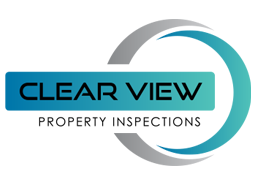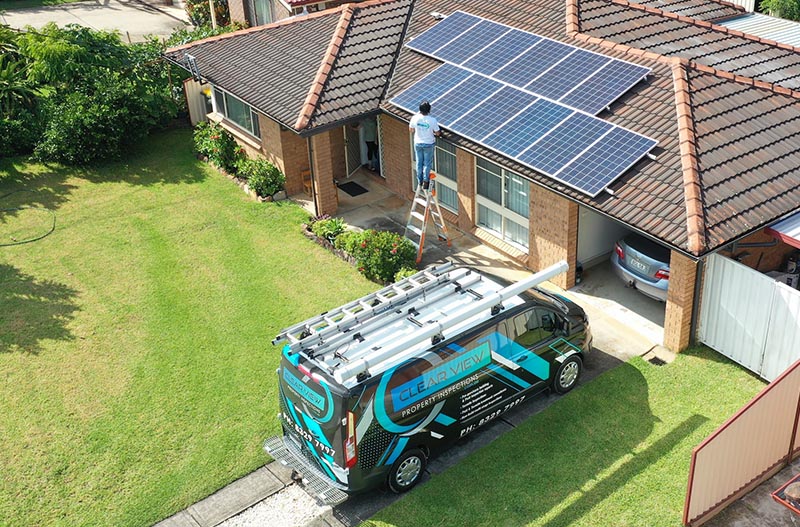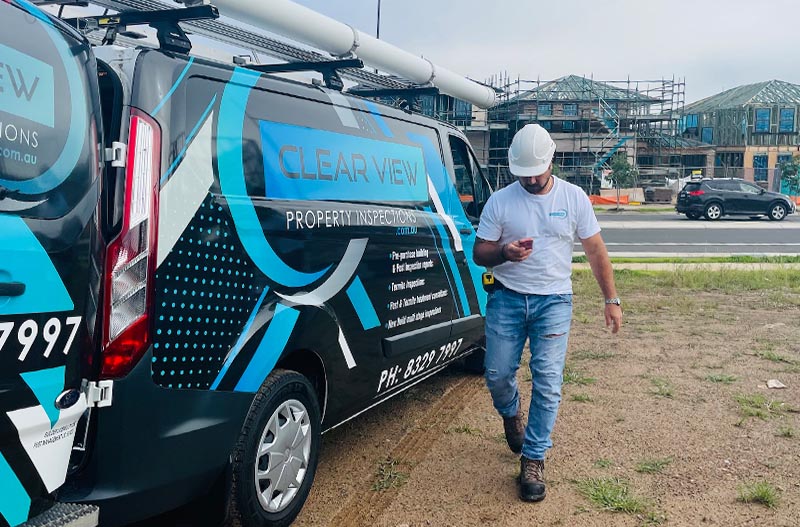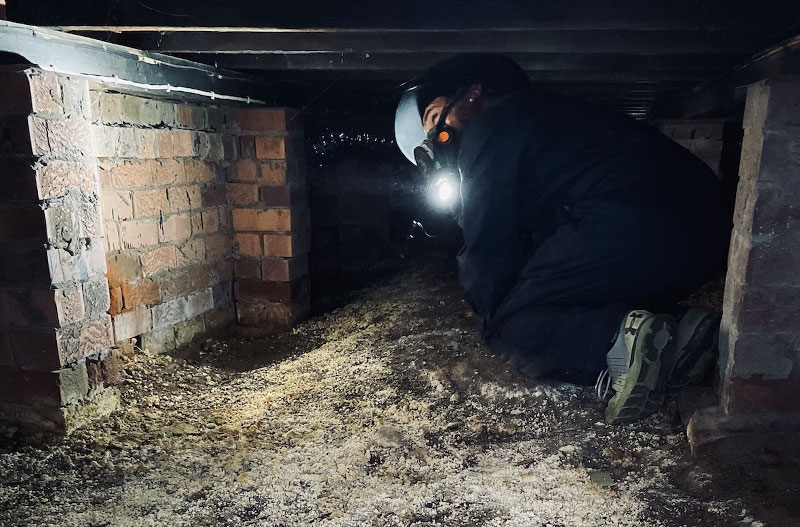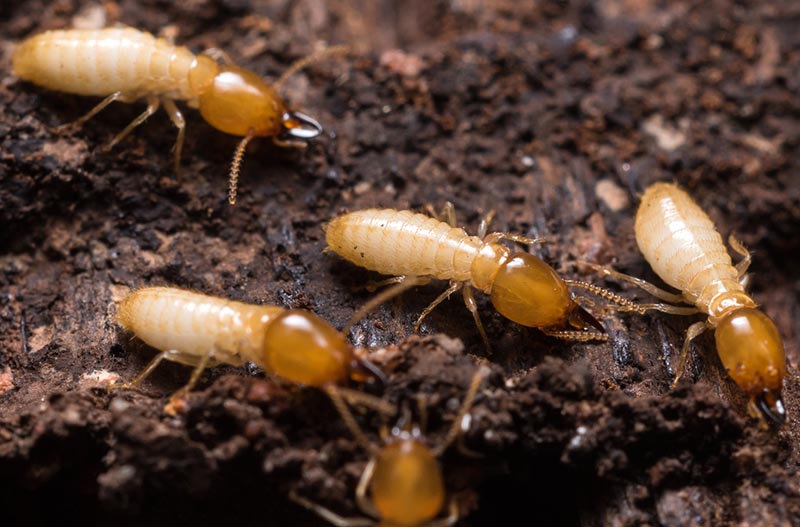Termite Treatment
Our expert termite treatment is fast, effective, and affordable. We're all about top-notch customer service and we'll be there for you every step of the way to make sure you're happy with the results. Let's keep those termites from causing any damage or stress.

Termite Inspection Quote
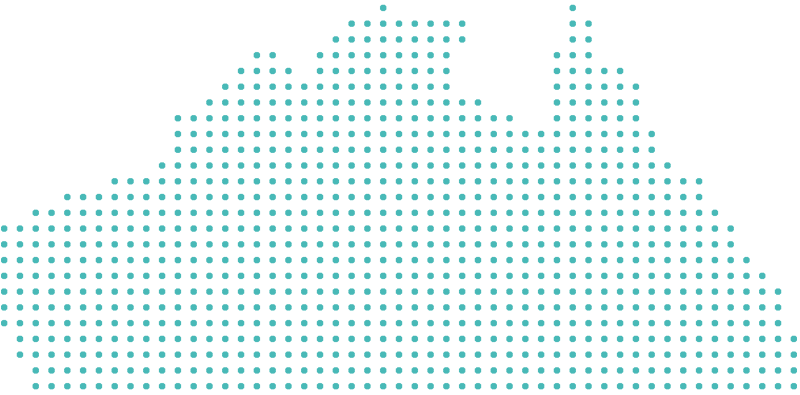
Termite Control
At Clear View Property Inspections, we specialize in building inspections and also have a lot of experience in pest and termite management. We can give advice on pest treatments and termite management, including preventive measures. Termite inspection services in NSW are provided by licensed pest control companies that focus on identifying, treating, and preventing termite infestations. They use different tools like moisture meters, infrared cameras, and sound detectors to find termites.
Termite control involves using various methods to prevent or eliminate termite infestations in a property. This is important because termites can cause significant damage to wooden structures, potentially compromising the safety and integrity of a building. There are different methods for termite control, such as chemical treatments, physical barriers, and baiting systems that use toxins ingested by termites to eradicate the entire colony.
Termite Treatments
Eliminate Termites
Our expert team will carefully inspect your property for termites using the latest treatment methods. With over 35 years of combined experience in Building construction and Pest Management services, we ensure thorough findings for your purchase decision.
Residential Termite Treatment
Termite baiting is our top choice for getting rid of active termites because it’s the only way to be sure you’ve completely eliminated the colony, unless you can find and destroy the actual nest. Here’s how it works: we place termite bait stations strategically over active termite areas without disturbing them. The bait they eat won’t harm mammals, but it does work on termites by disrupting their growth process until they die. This bait also softens their mandibles so that they can only feed on the soft material. After feeding, they take this back to the nest, ultimately wiping out the entire colony.
Our termite treatments and building inspection services are perfect for:
Home Owners
First Home Buyers
Property Investors
Builders and Contractors
Body Corporates
Building Managers
We personally handle all your building inspections without any middle-man involved. Our approach is simple and friendly, just like we would treat our own family.
Book your building inspection
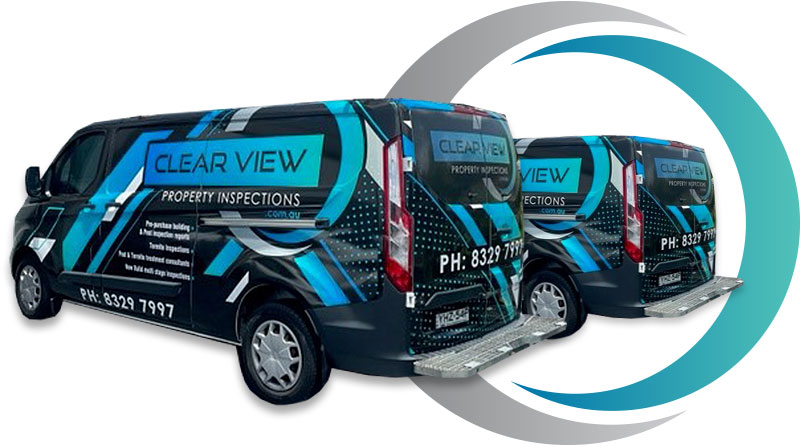
Termite Treatments
Termite Prevention Treatments
What treatment to use
The best termite treatment depends on a few factors like how bad the infestation is, what kind of property it is, and any environmental concerns. Each treatment has its pros and cons. It’s important to talk to a professional termite control company to find the best treatment for your situation. Termites are really destructive pests that can mess up a building. There are different methods for getting rid of termites, but not all work well.
There are different ways to deal with termites, each with pros and cons. Liquid treatments, baits, heat treatment, borate treatment, and fumigation are some effective options. The best method for you will depend on how bad the infestation is and what kind of property you have. A professional termite control company can help you figure out the right choice for your situation.
Soil Treatments
This treatment is often used to stop termites from getting into your home and continues to protect after the infestation has been treated. A liquid termiticide would be applied directly to the entire subfloor, around piers, and all subfloor perimeters. Before treating the subfloor, it’s best to clear it of debris, timbers, and stored items. Trenching is necessary for effective chemical penetration around all piers and footings in the subfloor area.
The exterior perimeter of the home will be treated similarly to the subfloor; however, in areas with paving or concrete surfaces, chemicals will be injected through drill holes. It’s important to note that these chemicals break down over time, so the soil needs retreatment every 5-10 years, as recommended by manufacturers, for them to remain effective.
Chemical reticulation system
This is another way to apply chemicals to the soil. The chemical is delivered through a buried pipe next to the outside walls, and it’s best installed before decking or concrete is laid. This allows for future soil retreatment without disrupting these areas.
The initial installation cost may be higher, but retreatment will be cheaper compared to drilling and hand spraying. Reticulation termite barrier systems are commonly used in new homes during construction, but they can also be added to existing buildings.
Termite Baits
Termite baiting stations are placed every 3 meters in the soil around the home, filled with non-toxic food until termites are found. Then baits are used to kill them. After installation, the stations should be checked regularly for activity. This treatment is a bit pricey but lets you monitor and eliminate termites.
Termite baits offer a long-term eco-friendly solution by attracting termites and killing their colonies with slow-acting poison. They effectively target the entire colony, are eco-friendly, and easy to maintain.
Spot Treatments
This treatment isn’t recommended and should be avoided. Spot treatments only kill the termites that have come in contact with the chemical you’ve sprayed, but they don’t affect the entire colony. You should consider this as a last resort if you can’t afford more effective treatment options. It’s used directly on active termites found in garden beds, tree stumps, or trees and is the cheapest way to deal with them. However, it’s not a replacement for a proper termite baiting program or an effective preventative termite barrier for your home.
Dusting
To be effective, you’ll need a lot of termites and places to dust the powder into their galleries. The powder is toxic to them and is applied using a puffer directly onto the termites, galleries, and workings. It slowly kills the termites so that the dust can spread throughout the colony. After termite activity stops, it’s advisable to set up a preventative barrier for future protection. Costs will vary widely depending on your situation.
Termite Heat Treatment
Using high temperatures to kill termites is a non-toxic and eco-friendly method that penetrates the wood to eliminate them. It’s very effective for large infestations but needs professional equipment and know-how for safe treatment.
Borate Treatment
Borate treatment is when a borate-based solution is applied to wood surfaces to create a barrier against termites. It’s safe, long-lasting, and effective at keeping termites away.
The inspection is to assess if there is evidence of timber pests, existing visual evidence of damage caused by timber pests and conducive conditions to timber pests such as termites.
At Clear View we are qualified Pest management technicians and will provide the best quality advice on preventative measures and have the experience to know where to look for concealed termite ingress. We have inspected and treated thousands of homes for termites.
The basis of the standard is a non-invasive inspection, comprising of visual inspection supplemented by non-marking sounding of elements and assessment of moisture content of materials.
As a buyer you must understand the seller’s perspective, they would not want an inspector cutting holes in walls, moving furniture, lifting insulation to access parts of the home. This is just not practical nor feasible.
This is why it’s imperative you have a qualified Pest technician complete your Timber pest inspection. Note that over 80% of inspectors are NOT Pest management technicians and have only completed 2 modules of the pest management course that allows them to inspect homes for timber pest.
At Clear View Property Inspections, we are Licensed Pest Management technicians with 10 years’ experience in inspecting and treating termites.
As standard at no extra cost, we use high technology equipment to help us over come the need for an invasive inspection should we find potential signs of concealed termites.
We use as standard, Thermal imaging camera (flir E85) top of the line camera to help identify heat differences in walls that could identify termites.
Termatrac T3i is used to pick up sound waves in between walls. Basically, if we find a conducive area, we will use the T3i on the area of concern to see if we can pick up movement in the wall for termites.
Another item that is used is the Tramex moisture meter, this reads high moisture content in-depth between walls. This is a great item to identify high moisture behind showers and baths that could be ultimately due to waterproofing failure and is highly conducive to termites.
Well, this depends on a lot of factors.
Size of property, subfloor or built on concrete slab, flat roof vs pitch roof, land size etc
Who is doing the inspection for you and how much are you paying? Unfortunately, cheap prices lead to fast careless inspections which will be done in generally 1 hr.
This is not the time to be shopping for cheap prices, you are buying a home for millions of dollars.
Pending some variables, a timber pest inspection should take approx. 3-4 hrs, this is the amount of time Clear View Property Inspections will spend at the property. Rest assured we have no issues spending longer amount of time if required. We will not cut corners to speed the inspection up.
Considering that the building inspection industry is currently unregulated in NSW with no licensing requirements whatsoever there are unfortunately many unqualified building inspectors offering lower cost building inspections.
Would you trust a tiler or even a truck driver or hairdresser to conduct a professional building inspection on your new property? Well, there is a good chance this is what you will receive.
Unfortunately, even many genuine Builders have caved to the get in get out fast property inspections due to the competition.
How can a builder and pest controller spend 3-4 hours on a property, write a detailed report for a combined fee for the average of $400-$600? This only takes into account the time. What about equipment, trucks, insurances, overheads, websites, advertising and licensing? Something has to give and its usually the inspection. You will find that Both building and pest inspections are done in under 2 hrs including the reports completed and sent to client.
Here at Clear View we are different.
- Robert is a licensed Builder of 20 years plus and a Pest management technician for over 10 years.
- He is the only person doing our inspections, No contractors or employees. You will speak directly with him.
- We allow sufficient time for all our inspections and will not leave till we are 100 percent satisfied with our findings.
- You will talk to Robert Directly after he has completed his report.
- Our prices are Fair for the quality and time of our services.
Refer to our prices section for more details.
- As standard we will use Tramex moisture meter to identify high moisture areas.
- Ladders to access roof cavity and roof top
- Second story home we use Top of the Line DJI Drone Mavic 2 pro to take pictures of second and third story roofs.
- High performance torches for our roof void and subfloor inspections.
- Shoe covers while we are inspecting inside homes.
- Latex gloves to ensure we leave no finger prints on man hole covers or anything else we touch.
Well let’s start with limitations of the report and the standard.
A report prepared in accordance with the standard is not certified of compliance of the property within the requirements of any Act, regulation, ordinance, local law or by Law and is not a warranty against problems developing with the building in the future.
Due to these limitations is why so many un-qualified inspectors complete pre-purchase Building inspections.
This does not mean a business can go beyond the standard. The standard is a minimum guide for everybody to follow and comply with.
At Clear View Property Inspections, we will endeavour to go beyond the standard when possible under our expertise and provide suitable information to our clients.
Below are some points that are standard in our inspection and reports.
- Identification of Safety hazards
- Identification of Major defects
- Identification of Minor defects
- Review of any conditions that might cause a future deterioration
- Detailed photography to identify and describe the issues in a report
- Suggestions about what can be done to rectify the identified issues
How long do building inspections take?
Depending on the size of the building, building inspections should take between three to four hours. We’ll go through a complete property check to ensure the safety and soundness of the property we’re inspecting.
The amount of time will differ on the size and construction type of the property.
The amount of time recommended is based on what we would allow but this is not the norm.
Generally, time spent on a job will be comparable to price of inspection. Cheap inspection = Fast inspection = Poor reporting. The average in today’s market is 1-2 hrs completely finished and report emailed to you.
Remember 99 percent of the time, you will recover your inspection fee and estimated repair costs with the seller. A detailed and thorough inspection is priceless and will give you strong negotiating power! It Could save you Tens of thousands of dollars or potentially save you making a big mistake in purchasing a deteriorated building costing you a life time of dollars in future repairs.
During a building inspection we’ll inspect:
- Fences and Garden beds
- Exterior of structure and surrounds
- Roof Void space
- Subfloor Space
- Exterior roof on single story
- Two story Homes, Clear View will use Drone to inspect roof.
- Overall site
- Interior – each and every room
- Plumbing leaks to bathrooms, kitchens, laundry’s
For example, our complete building inspection will include the following checks:
- Check windows and doors open and close properly where accessible
- Check for dampness and high moisture readings
- Check for any sagging ceilings, floors and buckling walls or other structural concerns
- Check for floorboard rot or dampness
- Check the taps and fittings for leaks
- Check the toilet cisterns by flushing all toilets
- Check the plumbing waste of all sinks for signs of blocked drains (water slow to get away) and looking for rust or other signs of damage to flex hoses etc
- Check the hot water system for age, rust, safety tempering valves etc
- Check light switches for functionality and fuse box
- Cracked floor tiles
- Cracks throughout the interior of the building structural or none structural
- Check the roof, gutters and drain pipes to assess their condition
- Check exterior walls for cracks and other structural issues
- Adequate site drainage
- Poor Construction standards
- Advise of any inaccessible areas
- High moisture areas
- Undulating floors
- Poor ventilation
- Obvious signs of mould
- Minor and major defects to be noted
- Safety concerns will be commented on.
Additionally, building inspections can also be requested to check for something specific, including:
- Visible signs of asbestos
- Electrical safety
- Smoke alarm functionality
- Licensed plumber inspection
- Pool safety and certifications
After your building inspection, we’ll fill out a complete building inspection report. As the property owner or future buyer, you’ll be able to see exactly what’s looking good and what needs some repairs.
At Clear View, we make sure our building inspection reports are straightforward and easy to understand, even if you’ve never had a building inspection before.
Your building inspection report will include the state of:
- Your garage, carport or garden shed
- Laundry, Kitchen and toilets
- Small retaining walls (non-structural)
- Steps and stairs
- Fencing
- Surface water drainage
- Stormwater run-off
- pavement and driveways
Also, if you’d like a specific area or item inspected during your building inspection, please let us know and we’ll include them in your personalised building inspection report.
In addition to the actual inspection details, your building inspection report will also include:
- Your name
- Address of the property to be inspected
- Reason for inspection (suspected mould, pre-purchase inspection, pool inspection)
- Date of building inspection
- Scope of building inspection
- List of areas not inspected and the reason they weren’t inspected
- Recommendations for further inspections or more specialised inspections for pests, electrical, structural engineers or others
- Summary of overall property condition considering its age and type including any major faults found in the building
- List of significant problems that require fixing
Keep in mind that pre-purchase building inspection reports don’t deal with absolutely every aspect of a property. Building inspections are generalised inspections of the major visible issues in a building at the time of inspection.
From there, we offer other inspection services for more specific problems we might find during our pre-purchase building inspection. So, with all that being said, a building inspection report will not include:
- Areas of a property that were obstructed or couldn’t be inspected
- Matters outside of our expertise at building inspectors
- An estimate of costs for repairs required (we can help with estimates to negotiate with the seller) We can recommend trades to give you estimates and we at Clear View can provide estimates on repairs also.
- Full termite and pest inspection beyond any visible identification
Furthermore, your building inspection will not go over the following areas of a property.
- Footings
- Concealed damp-proofing
- Electrical wiring and smoke detectors
- Plumbing, drainage and gasfitting
- Air conditioning units or ducting
- Swimming pools and pool equipment
- Watering systems
- Fireplaces and chimneys
- Security alarms and intercom systems
- Appliances including dishwashers, garbage disposals, ovens, ducted vacuum systems, hot plates and range hoods
- Hazards outside our service
- Every opening window
- Television and wifi reception
We offer some of these specialised inspections for swimming pools and other hazards.
Check out our complete list of services or contact us for more details.
Why Choose Clear View

Accurate Reporting
Buying or building a home will be one of the biggest personal and financial decisions you will ever undertake and having a thorough understanding from a detailed and accurate building inspection report will provide a clear view in your decisions.

We Are Different
We are the only Building Inspectors in Sydney NSW who is fully Licensed and experienced Builder and Licensed and Experienced Pest Management technician. The Inspection is done by the owner directly, No contractors, No employees, No time restraints.

Buyer Beware
More then 80% of inspectors doing pre-purchase building property inspections in NSW are not Builders or fully qualified pest management technicians or insured which is legal according to the Australian Standard AS4349.1-2007.

Trust in Quality
Buying property is one of the biggest purchases you’ll ever make. Invest in a building inspection report you can trust. This is not the time to be shopping for the cheapest inspection you can find.
Importance of a Quality Building & Pest Inspections
Recently, there have been a lot of building issues in Sydney causing problems for homeowners and builders in NSW. The construction industry hasn’t been well regulated, leading to unqualified inspectors missing important checks.
While the government has appointed a Building Commissioner to improve things, getting an expert inspector is crucial for saving money and protecting your property. Quality inspections are essential for avoiding financial losses and potential safety hazards. Make sure you choose a reliable inspector who won’t compromise on quality.
Contact us today!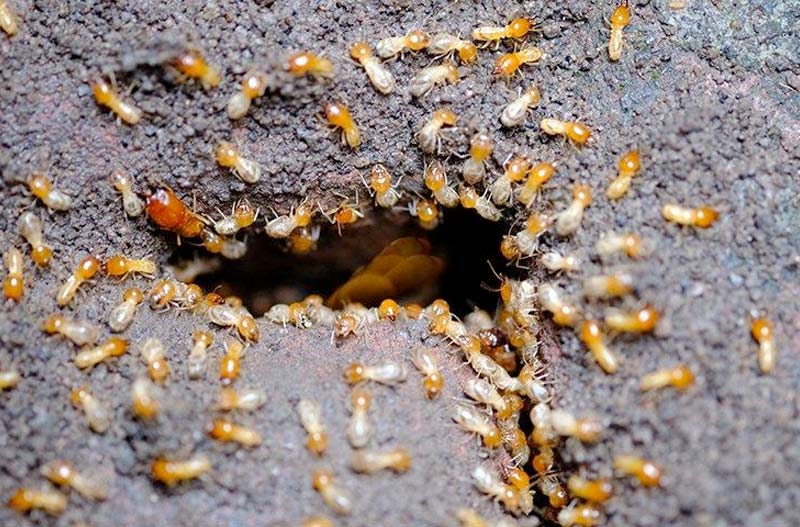
Prevent Termite Damage
Its very common to find previous termite damage or active termites in homes. Due to busy lifestyles home owners do not complete regular termite inspections to be unknowingly harbouring a termite infestation in their home. So many times, we find active termites in homes that are for sale!
Another common occurrence is home owners trying to hide the fact they have had termite issues. There is no law in NSW that home owners have to declare past or current termite issues.
We are experts on finding previous termite damage due to our experience for so many years of treating termites.
Building and Pest Inspections
At Clear View Property Inspections, we’re all about our special services, local vibe, and personal approach. As a family business, we want to make sure homes and businesses are safe and functional through property inspections. We’re not into the whole fast-paced growth thing like other companies. Our focus is on earning your trust and paying attention to every little detail.
- Fully Licensed and Insured
- Family Owned and Operated
- Easy to Understand Reports
- Inspection Consultation
- Fast, Friendly Response to Enquiries
- Trusted, Quality, Personalised Service
Don’t opt for a random building inspector. Choose Clear View Property Inspections for a building inspection you can trust.
Contact us today!
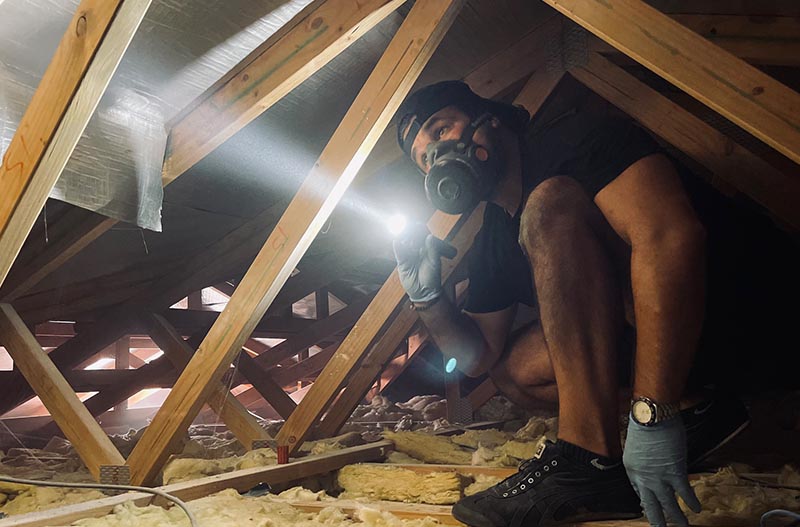
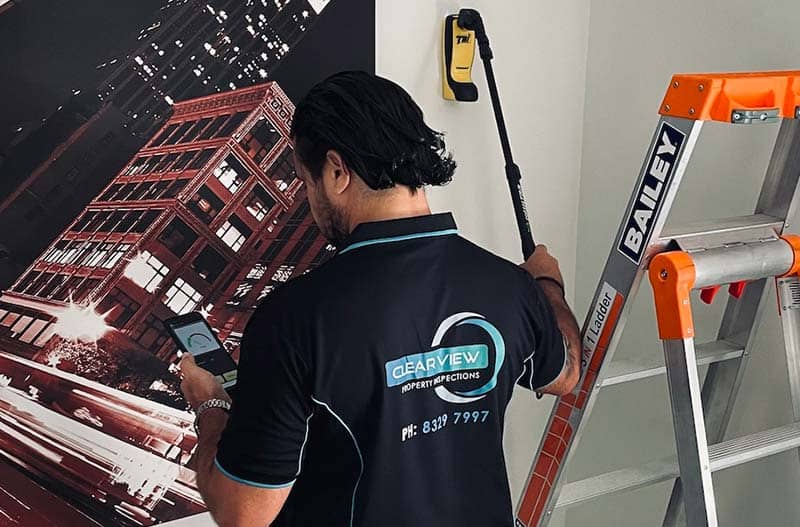
Building and Pest Inspections Sydney-Wide
Bankstown Baulkham Hills Campbelltown Castle Hill Hills District North Sydney Parramatta Penrith Rouse Hill Sydney Metropolitan Area Western Sydney
Get Free Quote
Hear from our customers

Your Building Inspector in Action
Our building inspection videos provide an overview of how our inspector Robert completes your report. Our experienced inspectors utilize state-of-the-art technology to uncover any potential issues. Whether you’re buying, selling, or simply maintaining your property, trust Clear View Inspection to deliver comprehensive and reliable building inspection services.
